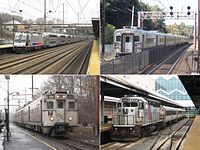Kearny Connection

Newark/Hoboken Division approaches | ||||||||||||||||||||||||||||||||||||||||||||||||||||||||||||||||||||||||||||||||||||||||||||||||||||||||||||||||||||||||||||||||||||||||||||||||||||||||||||||||||||||||||||||||||||||||||||||||||||||
|---|---|---|---|---|---|---|---|---|---|---|---|---|---|---|---|---|---|---|---|---|---|---|---|---|---|---|---|---|---|---|---|---|---|---|---|---|---|---|---|---|---|---|---|---|---|---|---|---|---|---|---|---|---|---|---|---|---|---|---|---|---|---|---|---|---|---|---|---|---|---|---|---|---|---|---|---|---|---|---|---|---|---|---|---|---|---|---|---|---|---|---|---|---|---|---|---|---|---|---|---|---|---|---|---|---|---|---|---|---|---|---|---|---|---|---|---|---|---|---|---|---|---|---|---|---|---|---|---|---|---|---|---|---|---|---|---|---|---|---|---|---|---|---|---|---|---|---|---|---|---|---|---|---|---|---|---|---|---|---|---|---|---|---|---|---|---|---|---|---|---|---|---|---|---|---|---|---|---|---|---|---|---|---|---|---|---|---|---|---|---|---|---|---|---|---|---|---|---|
| ||||||||||||||||||||||||||||||||||||||||||||||||||||||||||||||||||||||||||||||||||||||||||||||||||||||||||||||||||||||||||||||||||||||||||||||||||||||||||||||||||||||||||||||||||||||||||||||||||||||
| ||||||||||||||||||||||||||||||||||||||||||||||||||||||||||||||||||||||||||||||||||||||||||||||||||||||||||||||||||||||||||||||||||||||||||||||||||||||||||||||||||||||||||||||||||||||||||||||||||||||
Coordinates: 40°44′39″N 74°07′27″W / 40.7441°N 74.1242°WThe Kearny Connection is a railroad junction in Kearny, New Jersey that allows passenger trains from New Jersey Transit's Morris and Essex Lines to enter Amtrak's Northeast Corridor (NEC) and travel to and from New York Penn Station.[1][2][3] The junction, which opened in 1996, is notable for demonstrating the popularity of "one-seat" commutes and the potential such projects have for increasing state tax revenues through the subsequent boom in real estate prices.
Location and design[]
The Kearny Connection lies immediately north of the Waterfront Connection which serves to connect Hoboken with the NEC. Two tracks, one in each direction, carry trains from the former DL&W main line, which passes under the NEC, onto the NEC.[4][5] The new junction on the NEC is designated "Swift Interlocking" and is seven miles west of New York.[6]
There is a difference in voltage/frequency between the Northeast Corridor and the Morris and Essex Lines so only electric locomotives and EMUs that can switch between the two electrical systems are able to travel through the junction.
Impact[]
With the opening of service on June 10, 1996, travel time to Midtown, Manhattan was reduced by 20 minutes, eliminating the need for riders to first travel to Hoboken Terminal and transfer to PATH trains for transport under the Hudson River.[7] New Jersey Transit dubbed the new service Midtown Direct. By the 2000s, of 138 inbound and 150 outbound daily weekday trains on the three Morris and Essex Lines, 73 inbound and 71 outbound trains (about 50%) use the Kearny Connection.[citation needed]
The project's construction took three years, and $70 million to complete. The reduced commute times and the "one-seat" commute provided by the Kearny Connection increased ridership on the Morris and Essex Lines and increased residential property prices along the line. In 2010, it was estimated that the state of New Jersey collected hundreds of millions of dollars annually in additional property tax revenue due to the increased property prices along the Morris and Essex Lines.[8]
The Kearny Connection's popularity and success led to other transportation improvements such as the opening of the Secaucus Junction station seven years later. Additional attempts to create "one-seat" commutes to Midtown for riders from the Raritan Valley Line and the Montclair-Boonton Line using dual-mode Bombardier ALP-45DP locomotives have been stalled due to rush-hour capacity issues at Penn Station in New York. A proposal for "one-seat" commutes to Penn Station for Pascack Valley Line, Main Line and Bergen County Line riders via a loop at the Secaucus Junction station is part of the Gateway Project plan but faces criticism due to the existing overcrowding at Penn Station.[citation needed]
References[]
- ^ Miller, Luther S. "For NJT, $444 million - New Jersey Transit - includes article on Shirley DeLibero, executive director of NJT" Archived July 17, 2006, at the Wayback Machine, Railway Age, October 1991. Accessed August 11, 2007. "The Kearny Connection, in many ways the keystone of the master plan, will link the Gladstone Branch and Morristown rail lines with the Northeast Corridor line to provide direct access to Manhattan at a saving of at least 15 minutes in travel time. Riders on these lines must now journey to Hoboken and transfer to PATH or a ferry to reach Manhattan."
- ^ Hanley, Robert (May 1, 1991). "New Jersey to Add Trains to Midtown". New York Times. Retrieved February 16, 2011.
- ^ "Kearny Connection". www.betconsultantsinc.com. Retrieved June 22, 2021.
- ^ Chen, David W. (December 8, 1996). "All Aboard for New York, if There's Parking Near the Train". New York Times. Retrieved February 16, 2011.
- ^ Kannapell, Andrea (November 22, 1998). "Growing Pains; The Midtown Direct Line, a Victim of Its Own Success, Leaves Riders Grumbling About the Rush-Hour Madness". The New York Times.
- ^ "FY 2010 High Speed Intercity Passenger Rail Grant Program - Service Development Programs" (PDF). njtransit.com. New Jersey Transit. August 6, 2010. p. 19. Retrieved May 9, 2016.
- ^ Perez-pena, Richard (May 28, 1996). "Kearny Link Is Finished, Reducing Trip by Rail". The New York Times. ISSN 0362-4331. Retrieved May 9, 2016.
- ^ Homeowners Will Reap $18B in Benefits from ARC, TRI-STATE TRANSPORTATION CAMPAIGN JULY 29, 2010, http://blog.tstc.org/2010/07/29/homeowners-will-reap-18b-in-benefits-from-arc/
- NJ Transit Rail Operations
- Kearny, New Jersey
- Transportation in Hudson County, New Jersey
